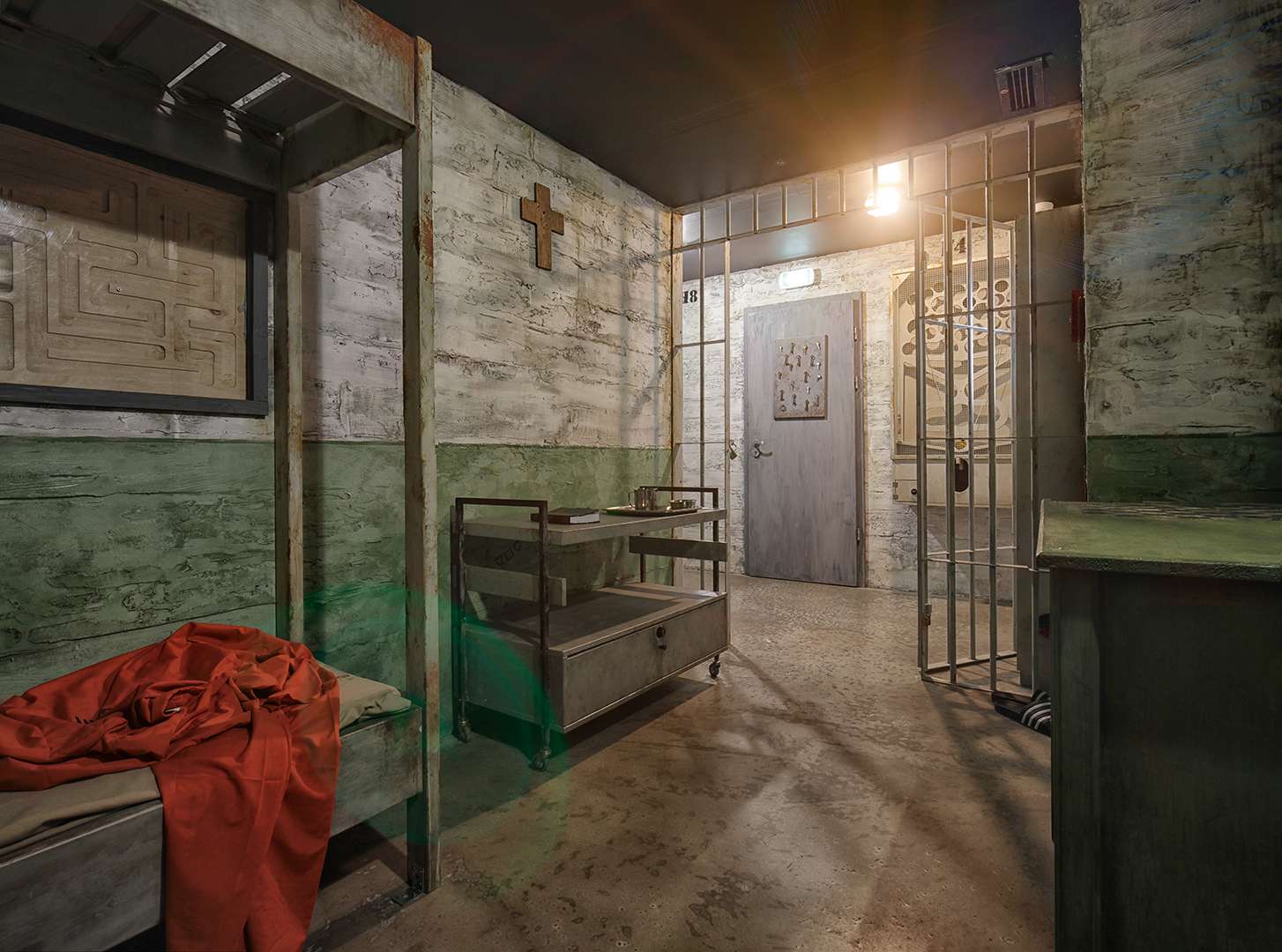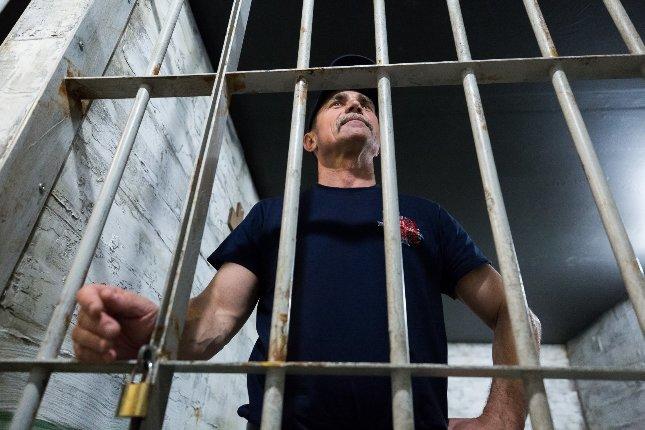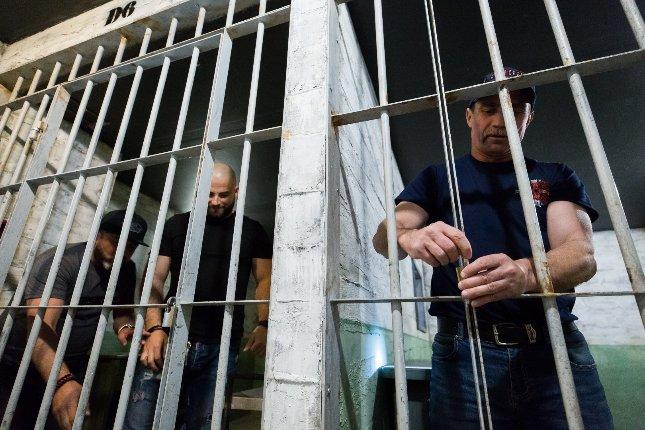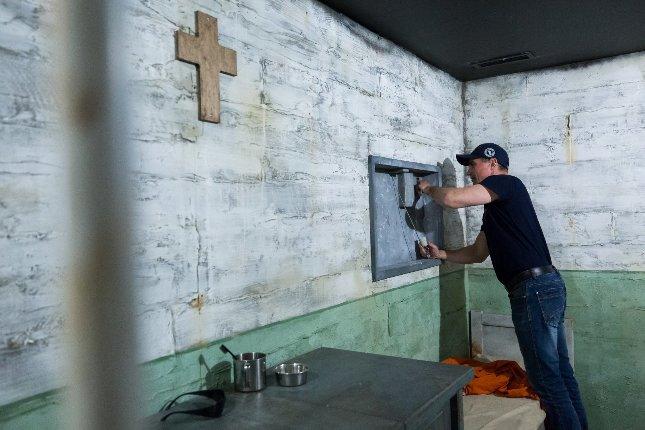The Four (+1) Most Famous Prison Breaks

In the escape room industry, one of the most common themes is the prison break. Here at PanIQ Room, the Jailbreak unit is consistently one of the favorites. Players have one hour to escape from a room modeled after the cells of Alcatraz or the halls of Fulsom Prison. That’s a far cry from the months or even years that these legends of liberation had to plot their own escape.
As you contemplate your own escape, take inspiration from some of the most famous prison breaks in history.
#1 – Ted Bundy (June 1977 and December 30, 1977)
Between 1974 and 1978, Ted Bundy raped and murdered young girls across the country, etching his name in infamy as one of the most notorious serial killers in the United States (He was also accused of pedophilia and necrophilia). When he was finally captured, Bundy was tried for the crime of kidnapping and sentenced to 15 years’ imprisonment.

Despite his brutality, Bundy was generally described as an attractive, intelligent man. His sharp wit is also proven by the fact that Bundy fired his lawyers because he thought he was better suited. As part of that effort, the judge allowed him to remove his restraints while working on his defense in the prison library. All it took was one well-timed cigarette break, and he jumped out of the open window of the second-floor room and successfully escaped. He travelled through the wilderness, dodging roadblocks and stealing supplies from cabins before he was recaptured six days later in a stolen vehicle.
But Bundy would escape yet again, and this time with more success. Using the classic “make-your-bed-look-like-you’re-sleeping-in-it” trick, he managed to climb through a vent in his cell to the apartment of the prison commander. From there, he made it to the top of the building and crossed to another area of the facility. There he found some street clothes in a janitor’s closet and used them to walk out right through the front door. No one knew he was gone for another seventeen hours, and by then, Bundy was on the other side of the country, on his way to Florida, where he would kill once again. Eventually, Ted Bundy was re-captured and found guilty on 36 counts of murder and sentenced to death by electric chair … he didn’t escape that one.
#2 – Escape from the Maze (September 1983)
The uprising that is called the largest British prison escape happened in 1983, when thirty-eight inmates escaped from HM Prison Maze in the United Kingdom. Most of the inmates at the facility were IRA soldiers, Irish rebels working to rip Northern Ireland away from the United Kingdom, so it’s no wonder that such a large group joined forces inside the facility to devise an escape plan.

With the help of smuggled weapons, the participants began disarming the guards one at a time on a September afternoon, holding them hostage to prevent them from sounding the alarm. Within a half hour, the prisoners completed their plans, stole a food transport truck, and drove off away from the Maze.
British police managed to arrest most of the prisoners the same day. Other escapees emigrated to the United States, where they were later arrested and returned to the U.K. However, two prisoners have never been tracked down and their whereabouts remain a mystery to this day. During the escape, nineteen guards were injured, but only one died … from a heart attack.
#3 – Alcatraz, the inescapable prison (June 1962)
Standing in the middle of San Francisco Bay’s wild and dangerous currents, Alcatraz Prison was considered one of the safest prisons of all time; during its twenty-nine years of operation, thirty-six inmates attempted to escape, and officials claim that none of them actually succeeded.
In 1962, however, three reckless prisoners made it the furthest, never to be seen again. The official explanation is that they almost definitely drowned, but a new study into the tidal phenomena of San Francisco Bay has opened a door to the possibility that they just might have succeeded.
Frank Morris and siblings John and Clarence Anglin had a long and storied history throughout the nation’s penitentiary system, including a number of previous escape attempts. So when they were all sent to Alcatraz together, it wasn’t a question of ‘if’ they’d try to escape, but ‘when’. Finally, with the help of sharpened spoons, old saw blades, and even an improvised electric drill they widened the ventilation hole in their cells enough to squeeze through. Then to deceive the guards, they made “doll heads”, using locks of real hair stolen from the barber shop, to place in their beds.

Through the vent, the three prisoners made it to the roof of the building, then to the ground using the bakery chimney. They successfully bypassed the night patrols (which most escaping prisoners ran into) and climbed over the fence. On the northeastern part of the island, they launched rafts made out of piles of raincoats inflated with a concertina (it’s a small accordian) and disappeared forever. They either escaped, living out their lives under an assumed name, or they drowned in the sea … or maybe became shark food. According to the FBI, it was almost certainly not the first version of this plan, but they always admitted that it was brilliant nonetheless.
#4 – El Chapo (2001 and 2014)
The Mexican drug baron dubbed El Chapo (it means, “Stocky”) due to his short stature is the most powerful personality in the “industry”, the leader of the Sinaloa drug cartel. Before his first capture, he did very well on two lists: Forbes’ most influential person in the world (41st in 2009) and the United States’ most wanted list (#1 baby!).
Joaquín Archivaldo Guzmán Loera by birth was first sentenced to twenty years and six months in prison by Mexican authorities on the charges of possession of firearms, drug trafficking, and murder. But Mexican prison was rather kind to El Chapo, as he spent his days behind bars, living luxuriously with his mistresses and bodyguards, thanks to generous bribes to the prison staff.
However when the U.S. came calling, Guzmán began to organize his escape. The prison suite he enjoyed in Mexico probably wouldn’t transfer to the States, so he acted quickly to avoid extradition. In January 2001, a prison guard opened Guzmán’s electronic cell door while the maintenance man pushed a laundry container full of dirty clothes in front of the cell for El Chapo’s taxi. He then loaded the dirty sheets onto a truck that carried the drug lord out of the prison. A follow-up investigation found that about seventy-eight people were involved in the escape, costing El Chapo about $2.5 million, pocket change to a man of his wealth.
In 2014, the cartel leader was in Mexican handcuffs again (and under a bit more security). Yet still, he escaped again. El Chapo, one of the most famous criminals in the world, didn’t simply walk out of the prison, but rode a motorcycle out through a tunnel that led from his cell to freedom that had been under construction for months.
In 2015, America was granted extradition, and in 2017 Guzman was convicted, sentenced to life imprisonment plus 30 years in prison, and taken to America’s most secure prison to live out his final days.
+1 Bonus Escape – The “Whiskey Robber” (1999 and 2019)

Attila Ambrus became a part of Hungarian pop culture in recent decades as a bank robber. The professional hockey player managed to rob thirty such entities between 1993 and 1999. He would always drink a bit of whiskey at a nearby pub before his crimes; he’d even leave an empty bottle behind at the crime scene sometimes — earning him the nickname, the “Whiskey Robber”. He wore ridiculous disguises, offered flowers to female tellers before robbing them, and sent the police bottles of wine after his crimes. During his “career,” he never harmed anyone, but he always got away.
During a robbery in ’99, his partner was caught and rolled on him during the interrogation, so the police did finally catch him. After six months in detention awaiting trial, he managed to slip away from a place no one had succeeded in escaping for a century. After his escape, he committed another three robberies before being caught again. In 2002, Ambrus was sentenced to seventeen years in prison. Due to good behavior, he was released after only twelve, during which time he graduated from high school, earned a degree, studied English, and picked up a craft (ceramics)!

But Ambrus’ story doesn’t really get interesting until 2019 when he volunteered to be put behind bars once again. However this time, it was in PanIQ Room’s Budapest unit in a room called Jailbreak, where The Whiskey Robber finally met his match.

“This room is very imaginative and modern,” Ambrus told journalists about his recent experience. “I really liked the game, and the challenge of the escape as well. If we had two months in here, in principle, it would be possible to manage the escape even without the tasks. In January, it will be eight years since I was released, and it made my job a little harder because I’m not used to the bars anymore. The whiskey we warmed up with was too little, but if I had brought a wire with me, we would have easily got out. We were even thinking about buying an axe on the way here and if we couldn’t do it otherwise, we’ll solve it by force!” the Whiskey Robber joked before turning serious about his earlier escape.

“It doesn’t work like you can escape from somewhere in ten minutes. I had a month to plan to get out of Gyorskocsi Street, where no one had escaped from in a hundred years. I used a security issue back then: at that time there were only a few police officers working there, the technology was bad, and there were a lot of blind spots for security cameras that I could observe in a month.”